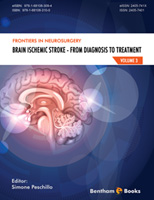Abstract
Acute ischemic stroke (AIS) is a significant medical disease with relevant mortality and morbidity associated, that, especially in recent years, has undergone a major development of drugs and devices used for its treatment. A poor number of patients respects the criteria for treatment with intravenous drug (IVT) with recombinant tissue plasminogen activator, and the efficacy of this treatment in large vessel occlusion is percentually low. Recently, incresead percentage number of patients with AIS are treated with mechanical embolectomy if IVT is ineffective or controindicated. An important technological upgrading of devices used for the endovascular treatment of AIS, has allowed a significant increase in rates of recanalization and neurological improvement of patients treated, completely replacing the old device. Furthermore the use of these new devices has not caused an increase in intracerebral hemorragic (ICH). This chapter highlights the devices used in current practice for endovascular treatment of AIS, the different endovascular approaches and a brief review about the recent randomized trials, which have evaluated the efficacy of these new devices.
Keywords: Acute Ischemic Stroke, Endovascular treatment, Large Vessel Occlusion, Mechanical Thrombectomy, Stentriviers, Tromboaspiration.






















